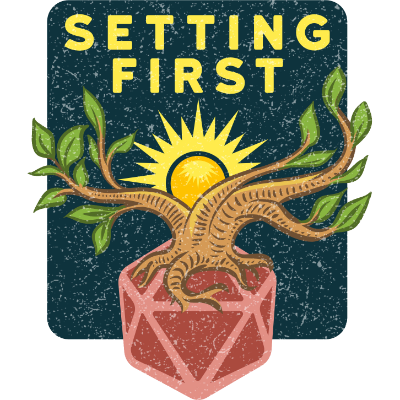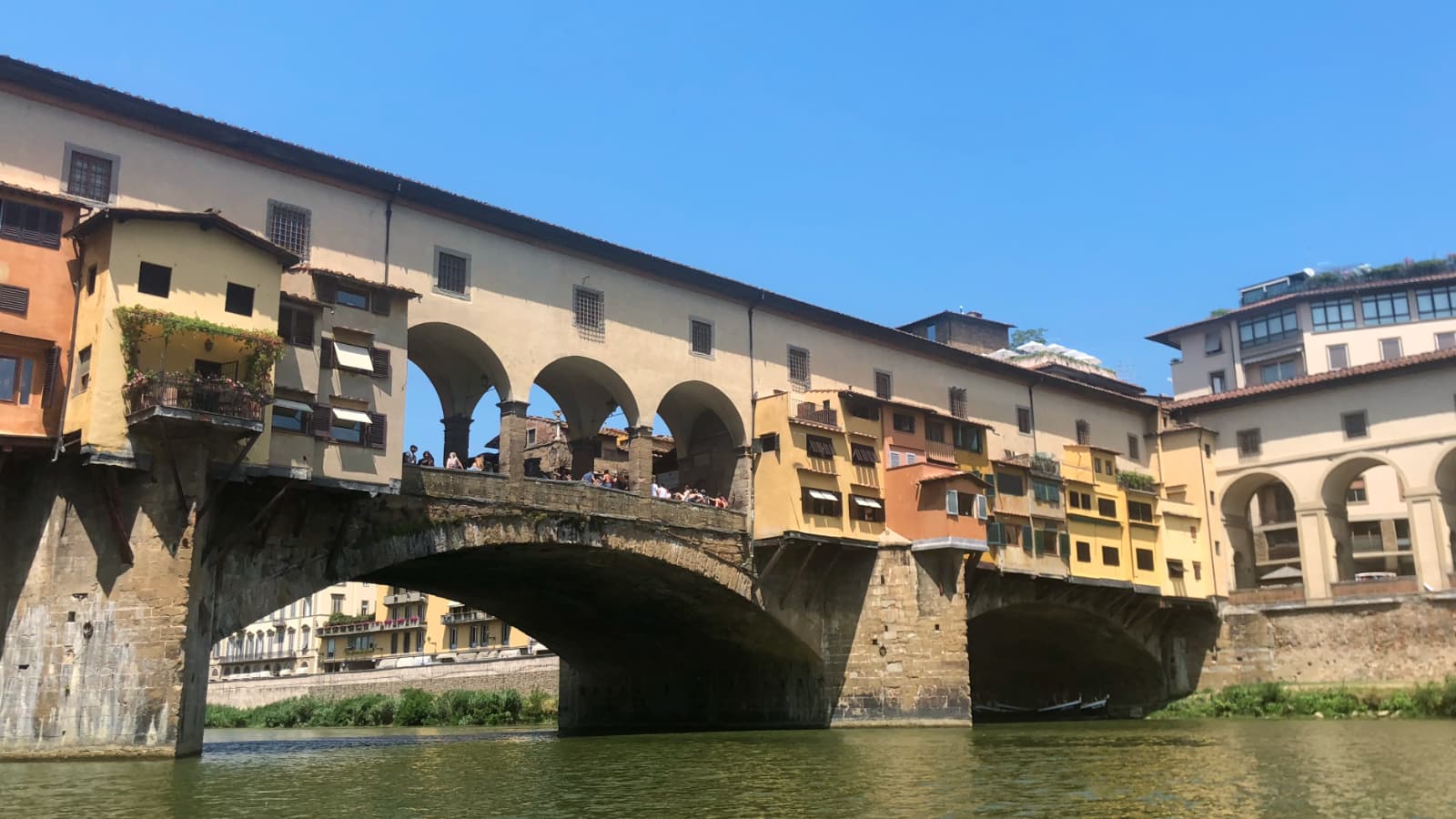
There’s a reason tabletop RPG settings that offer a breadth of possibilities are so popular.
In the year 2023 it appears that short campaigns and one-shots are the most popular form of engaging with roleplaying games. I think of these as akin to stand-alone movies. But for those of us who enjoy lengthy campaigns that are more like multi-season TV dramas, a setting that can support extended play is vital.
As a gamemaster, when I’m sifting through published settings, I find these characteristics important:
- Depth
- Breadth
- Internal Consistency
- Support
- Compatibility
I refer to a setting that can provide all of the above to be foundational, meaning that it can serve as the core of a gaming group’s activities for a long time. A foundational setting rewards my efforts as a GM by keeping my players and I engaged through dozens of sessions.
Depth
What can I grab onto and run with as a GM? A foundational setting gives me hooks left and right, details, tidbits of information that I can use as raw ingredients for situations, scenarios, and campaign arcs. A bland, shallow setting relies on hackneyed tropes and presents a static environment, making me do the heavy lifting of coming up with new adventure ideas. A deep setting gives me more material than I could ever incorporate into a single campaign.
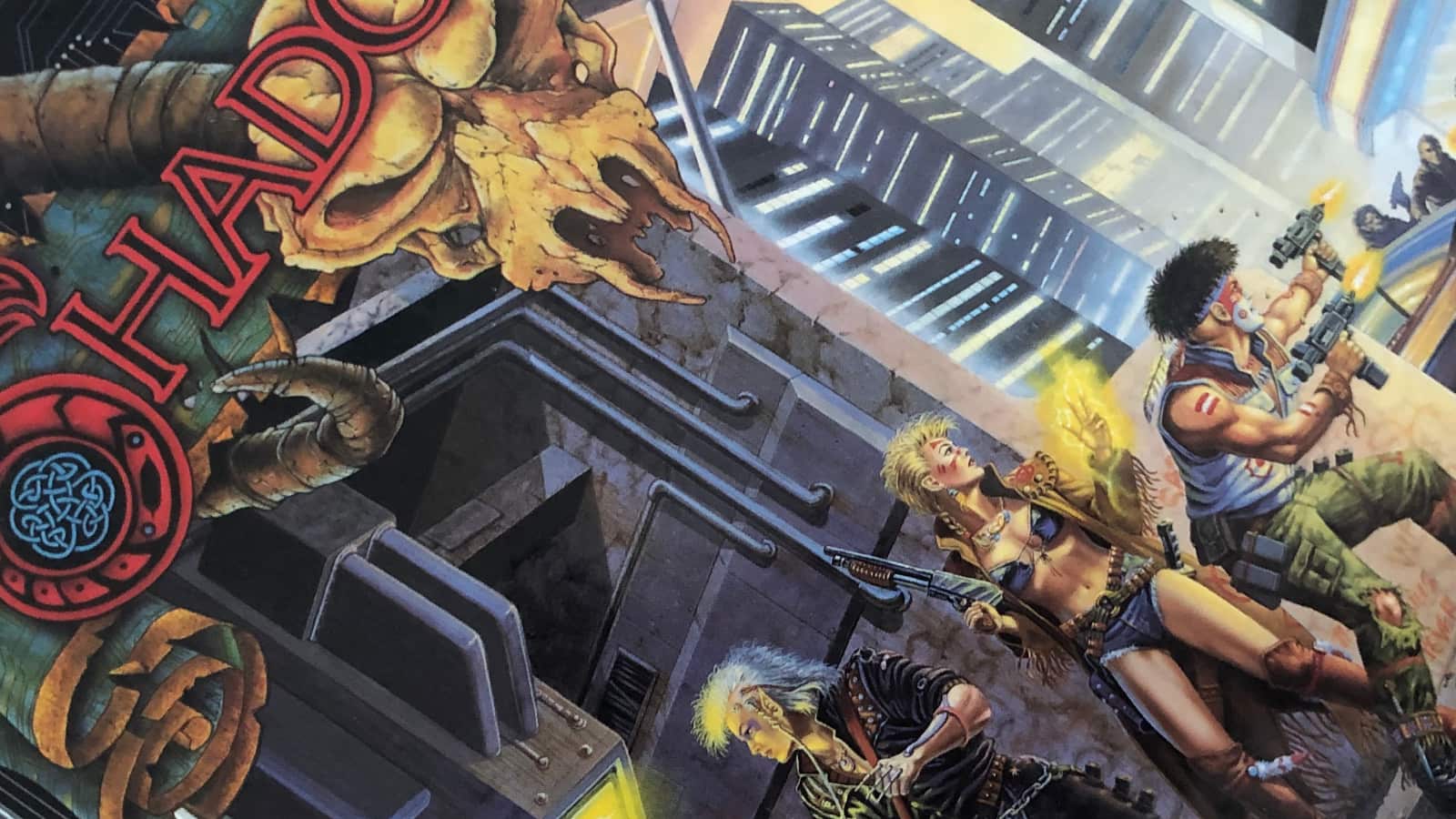
Shadowrun gets a lot of grief for its mechanical complexity (and in recent editions, poor editing), but it’s a consistently popular game. One of the reasons has to be its depth. I ran a lengthy 2e campaign back in the day, and I loved how dynamic the setting was, how many conflicts small and large were continually rippling through the Sixth World, and how easy it was for me to mix elements together to create adventures.
I got a tremendous amount of mileage out of the Sprawl Sites book for 2e, which provided a nifty assortment of small-scale scenarios, each taking up only a couple of pages and showcasing a location and a small number of NPCs. These scenarios provided a feel for what life in the world of Shadowrun was like, and I frequently integrated them with my own ideas to create full adventures.
Breadth
A foundational setting provides a wide range of possibilities. Geographic, cultural, and technological diversity can be indicators of breadth, but not always. The inverse is also true, in that sometimes a relatively narrow-seeming setting can provide plenty of possibilities. In a setting with real breadth, a GM could run an extended campaign all the way to its end, then start up a new campaign without fear of boring their players. A broad setting can never be exhausted.

The areas once known as North Africa, Britain, and Russia all fit into the post-Eschaton world of Degenesis. But beyond the geographic range, the setting encompasses seven well-developed cultures, thirteen cults, and myriad clans. Our current campaign is on pause after 62 sessions, but when it resumes I’ll likely run another two or three dozen sessions before wrapping it up.
Because of the setting’s breadth, I could then fire up a new campaign in which the PCs come from a very different selection of cults, or from a single cult. They could be merchants trying to build their fortune, hell-bent religious zealots determined to convert by blade and bullet, grim saviors of humanity fighting a doomed battle against the Sepsis, pirates, smugglers, clan warriors, lawgivers trying to keep order amid the chaos — the possibilities are nearly endless.
Internal Consistency
Consistency doesn’t mean predictability. A foundational setting does, however, make sense on its own terms. It’s unavoidable that any setting that provides a dynamic framework for adventure will contain elements that don’t hold up under close scrutiny — in particular any time high technology and magic appear together. But these seams, these imperfect elements shouldn’t be enough to make a setting feel disjointed and inorganic.
There’s a lot to love about Numenera. It’s one of the most beautifully-presented RPG settings ever created. It’s also stuffed to the gills with wildly creative setting material — everything from unique environments to weird technological artifacts. But as a GM I found it extremely difficult to get a grip on.
In particular I couldn’t understand how the world functioned on a day-to-day basis, given that pre-industrial and far-far future technology coexisted to varying degrees. What are the inhabitants’ beliefs? How do the cultures of this mixed-up world relate to each other? How does anything stay relatively constant in an environment in which newly-uncovered Numenera could upset everything at any time? I just couldn’t make sense of it and internalize the world’s workings in a way that allowed me to confidently run a campaign.
Support
If I’m not building my own setting, I want material beyond the core books — supplements that provide the details on a planet, a region, or a city. I want info on factions, I want to understand what forces are impacting the world and creating new conflicts. I want well-defined adventures, even if I don’t plan on running them as-is, because they can operate as guideposts and springboards for my own creativity. I want visual representations of the world to inspire me.
The first material outlining the world of Glorantha appeared in 1975. Since that time the setting has been described in detail through a variety of publications, including the massive two-volume, system-agnostic Guide to Glorantha. I ran multiple Gloranthan campaigns using the 2e and 3e RuneQuest rules, but it was the 2e supplements that still hold a special place in my heart. I got an enormous amount of use out of Cults of Prax, Cults of Terror, Trollpak, Snakepipe Hollow, Griffin Mountain, Borderlands, Pavis: Threshold to Danger, and Big Rubble: The Deadly City.
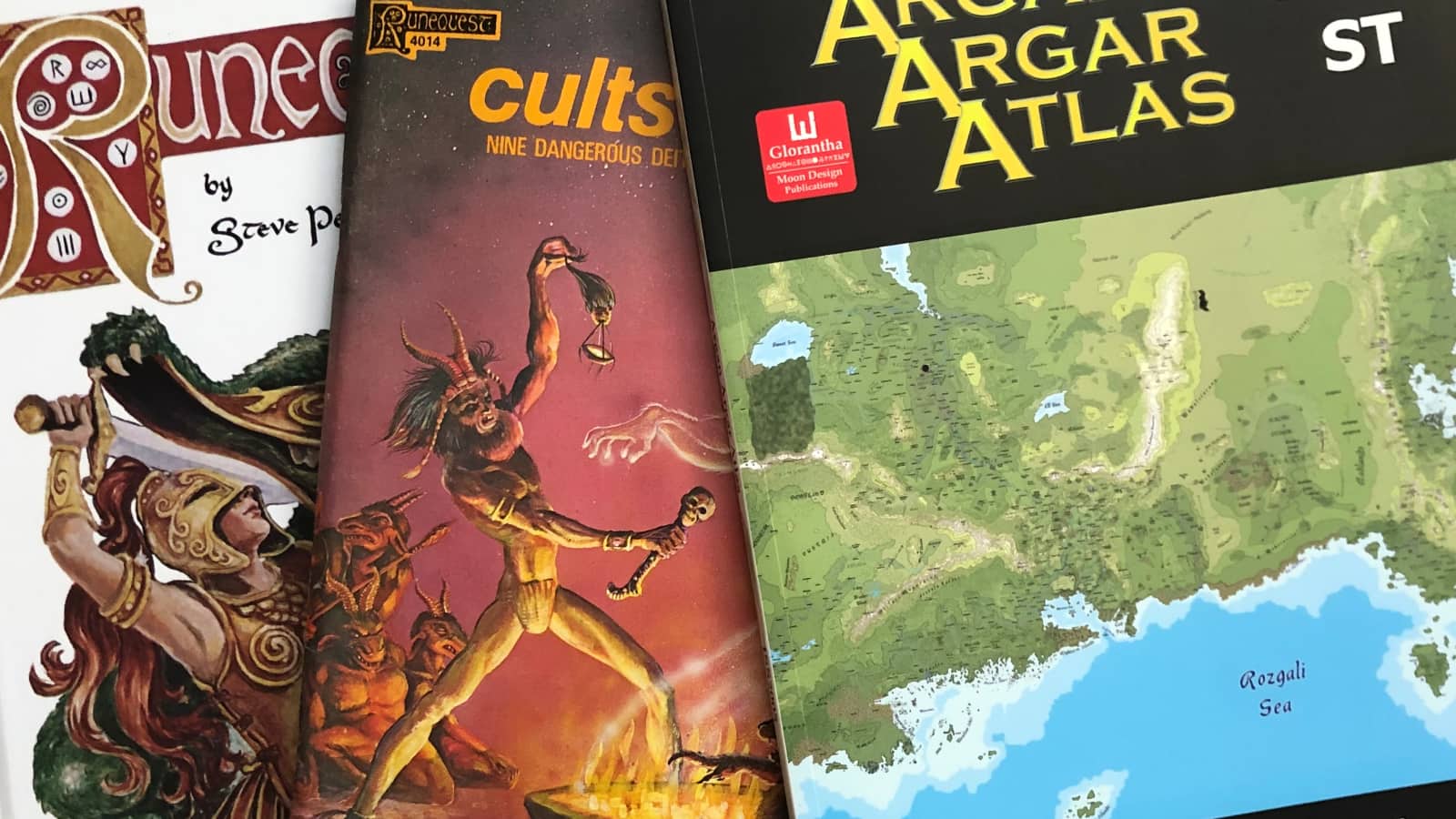
While the relatively new RuneQuest: Adventures in Glorantha hasn’t accumulated as many supplements yet, the system-agnostic materials are still usable without modification. Chaosium has also established possibly the best fan-publishing system in all of roleplaying. Known as the Jonstown Compendium, this program has led to over 200 fan-produced supplements, many of them of extraordinary quality. Finally, Chaosium offers most of the material published for earlier editions as PDFs, and a free conversion guide makes it easy to use them with the latest edition.
Compatibility
The categories listed above are all at least marginally objective, though not immune to criticism (ours is not a hobby populated by people devoid of opinions). But compatibility is wholly subjective. Sometimes, no matter how much a creative work seems like it ought to be right for you, it just doesn’t resonate.
And sometimes a fictional world just hits you the right way and you’re instantly a fan. You can’t get enough of it. You will always want more of it. As a gamemaster, that’s the kind of setting you want to put your energy into bringing to life for your players.
The first RPG setting that ever grabbed me that way was RuneQuest. Shadowrun had a similar effect on me years later. Then it was Eclipse Phase, and most recently Degenesis stole my heart. All of these have been foundational settings, into which I’ve poured hours upon hours of effort, and which have given me immense satisfaction and enjoyment in return.
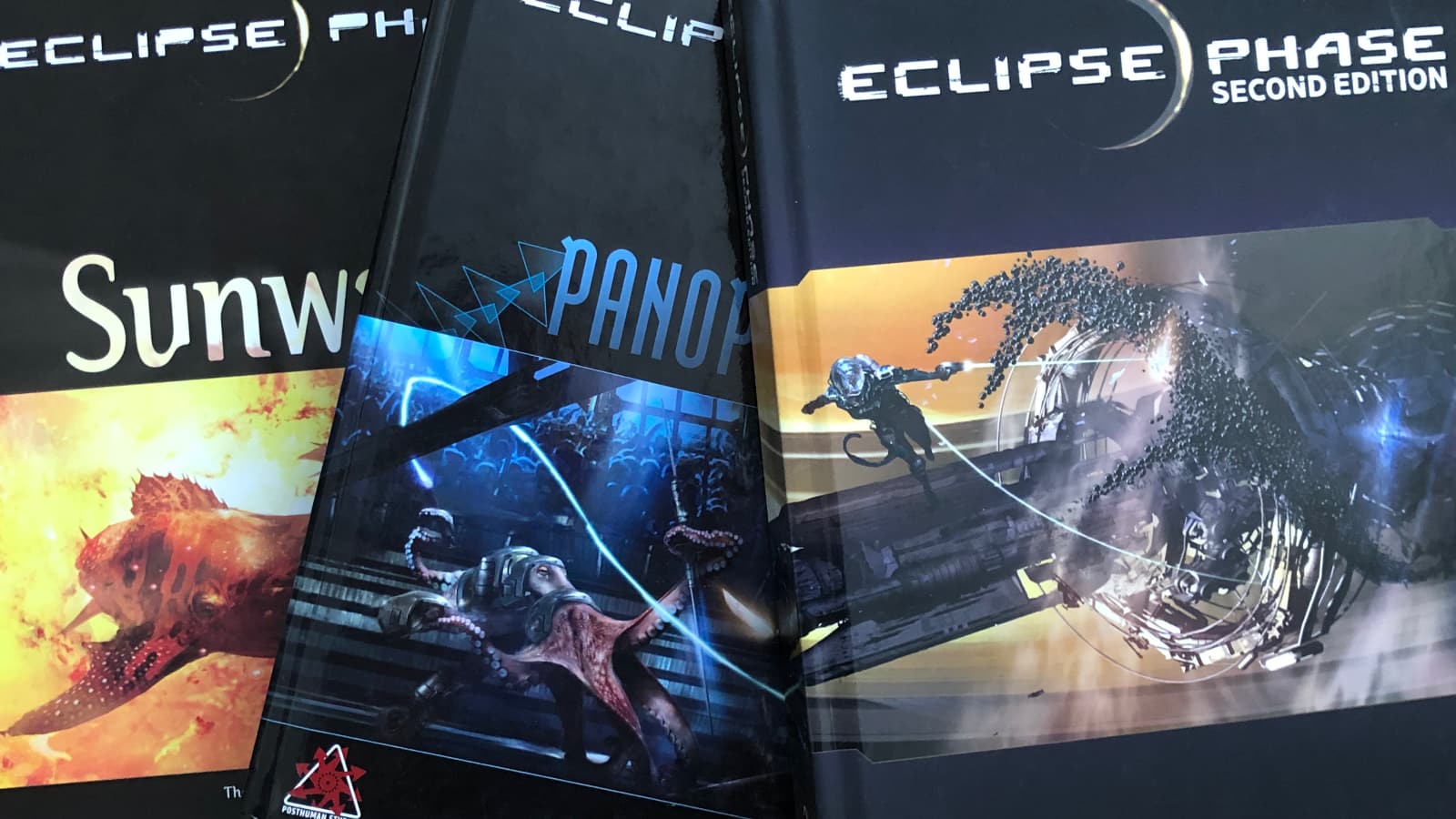
For some people it’s the lands of Ambria and Davokar from Symbaroum. For others it’s Warhammer 40K or Earthdawn, or the World of Darkness first revealed in Vampire: The Masquerade.
What Are Your Foundational Settings?
Let’s talk about it in the Unpossible Journeys Discord.
Ω
